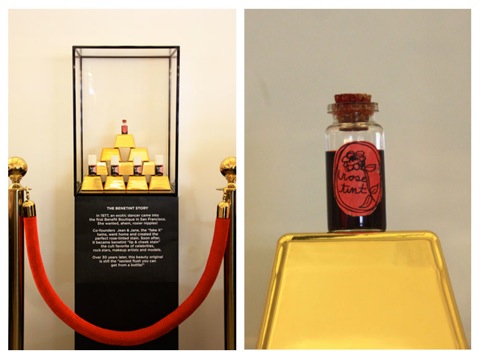Makeup Museum (MM) Musings is a series that examines a broad range of museum topics as they relate to the collecting of cosmetics, along with my vision for a "real", physical Makeup Museum. These posts help me think through how I'd run things if the Museum was an actual organization, as well as examine the ways it's currently functioning. I also hope that these posts make everyone see that the idea of a museum devoted to cosmetics isn't so crazy after all – it can be done!
 While I love museums, the one thing I don't love is not being able to touch the objects. Even standing too close can sometimes set off an alarm. While there are exceptions, such as the Please Touch Museum in Philadelphia (dedicated to children 7 and under) and various "touch tours", efforts to enable those without sight to experience art by handling the objects, for the most part museums adhere to a strict no-touching policy in order to preserve the pieces on display. This is in direct opposition to the human need to touch – we are tactile creatures who need to put our fingers on things to fully understand and appreciate them. (It also runs counter to the notion that many of us will automatically want to do something that we're told we can't do – perhaps museums should use some reverse psychology by encouraging visitors to touch). This fact is especially important to remember when it comes to makeup, and the notion of a makeup museum.
While I love museums, the one thing I don't love is not being able to touch the objects. Even standing too close can sometimes set off an alarm. While there are exceptions, such as the Please Touch Museum in Philadelphia (dedicated to children 7 and under) and various "touch tours", efforts to enable those without sight to experience art by handling the objects, for the most part museums adhere to a strict no-touching policy in order to preserve the pieces on display. This is in direct opposition to the human need to touch – we are tactile creatures who need to put our fingers on things to fully understand and appreciate them. (It also runs counter to the notion that many of us will automatically want to do something that we're told we can't do – perhaps museums should use some reverse psychology by encouraging visitors to touch). This fact is especially important to remember when it comes to makeup, and the notion of a makeup museum.
If you've spent any time at Sephora or the beauty counters at any department store, you'll notice how worn the testers are. People shopping for makeup want to be able to not just see the colors but experience the texture of the makeup, to feel it on their skin. Who doesn't spot a cream blush tester at a counter and not want to dip their fingers in to find out how emollient it is? Or happen upon a sparkly eye shadow and not want to immediately swatch it to see how the shimmer appears? This need to touch is especially noticeable when faced with brand-new products. For beauty junkies in particular, there is nothing more satisfying than that first swipe of lipstick straight from the tube or watching a brush sweep across the hetchmarks of a shiny new blush. It's also slightly problematic from a museum standpoint.
My plan for a physical museum would definitely involve keeping the objects behind glass, with most of the containers open and covered with a anti-reflective, UV-resistant piece of plastic. Because virtually all of the palettes have designs in the products themselves, they would need to be kept open so people could properly view them. However, that would make it all the more tempting to touch – especially since, as previously noted, I'm guessing those most likely to visit a makeup museum (read: cosmetics addicts) would be particularly eager to plunge their hands into these mint-condition items. And especially if some of the cases for these objects were kept behind a velvet rope, like cosmetic company Benefit's very first BeneTint:
To celebrate the store's flagship opening in New York City last year, Benefit installed a case displaying the very first bottle of their best-selling, rose-based liquid blush. According to style.com, it traveled in an armored car from the company's headquarters in San Francisco and had two guards protecting it once it was on display. I don't know about you, but once I see a velvet rope at a museum I'm seized with the urge to get past it, if for no other reason because I'm not supposed to. And for this item, I'd probably be dragged out by the guards for pushing my nose up against the glass or even trying to remove it to be as close as possible to the object.
So, how do we resolve this?1 How would a makeup museum reconcile the visitors' urge to touch the objects with the need to keep them pristine? My solution, although imperfect, is to have a dedicated gallery or room just for swatching. Brand-new items could be continuously donated by makeup companies. Visitors could come in and play with makeup the way they would in a department store (but the items would be kept in much better condition than the often grubby, dirty testers you find in stores). If it all possible, I'd have the same items that are out on display in this space so that visitors could get a little taste of what it would be like to wear the object. And perhaps there could even be a kiosk where ever-changing free samples of makeup and skincare are provided and visitors could pick out 3 that appeal to them (sort of like Sephora's popular "pick 3" samples at their online checkout – many other online beauty retailers have implemented this perk). Obviously a museum staffer would have to oversee it so that some bad apples couldn't take all the samples and run, but it would be a bonus for visitors and if the samples were always changing, a good way for them to be lured back to the museum.
Some questions to consider: do museums' no-touch policies bug you? And if you were a makeup museum visitor, would you like the idea of a "swatching gallery" containing the same objects you saw on display?
1 For an excellent article on the line between no touching and encouraging visitors to touch, see this post by Nina Simon at Museum 2.0.
(image from museumheygirl.tumblr.com)


